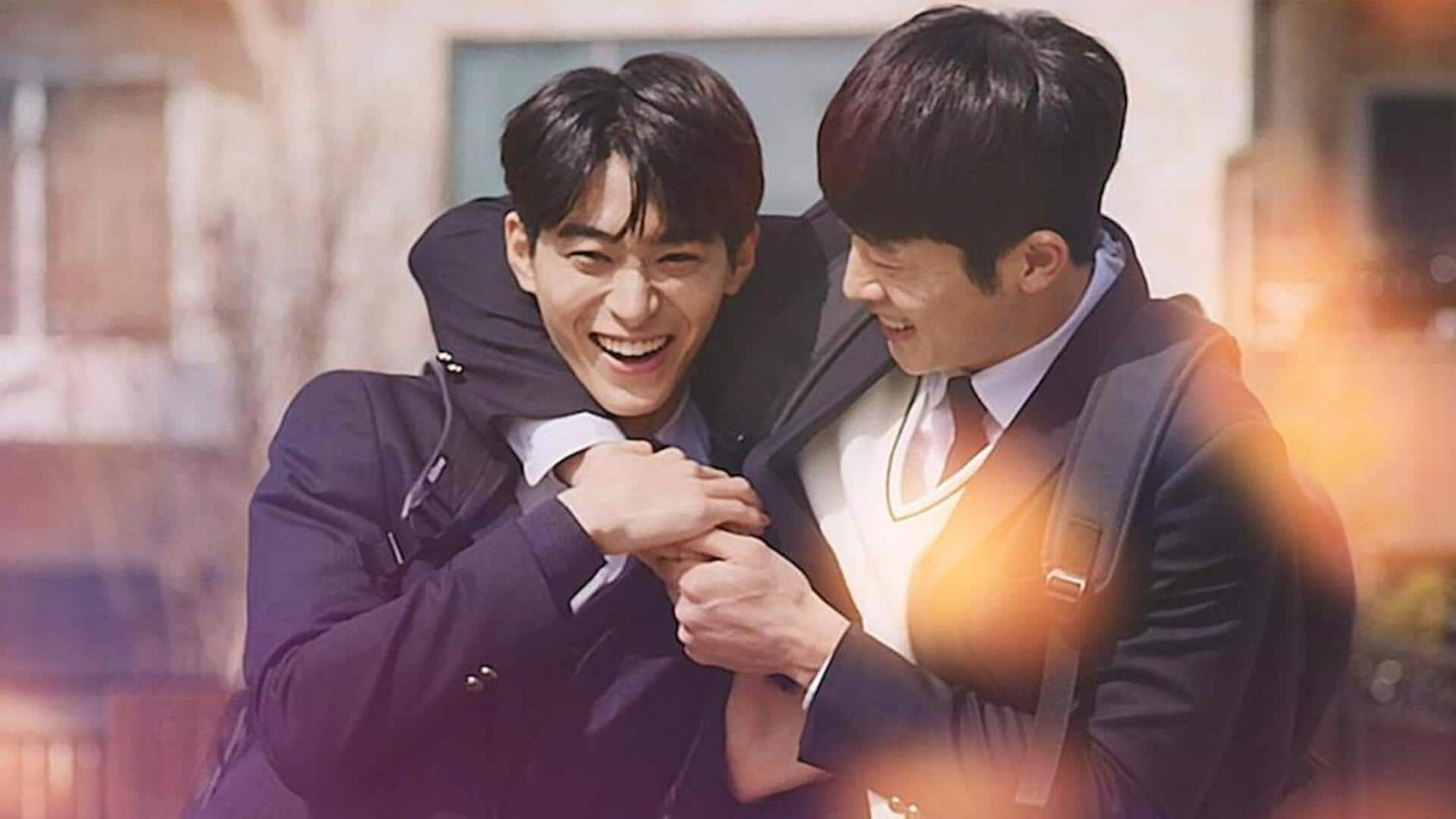
Explainer: Evolution of LGBTQ+ representation in South Korean films, dramas
What's the story
Online or offline, South Korean content's influence pervades the global landscape. Despite shaping international trends, the country holds conservative views on the LGBTQ+ community. Though mainstream representation remains limited, Korean films and K-dramas have lately been able to portray the queer community in a way that reflects evolving societal attitudes and challenges. Here, we unravel the changing dynamics of LGBTQ+ representation in Korean entertainment.
Context
Why does this story matter?
Homosexuality—historically a social taboo—remains unaddressed in the South Korean Constitution. The community continues to encounter challenges in personal and professional spheres, often refraining from openly discussing their sexual orientation. While Korea hasn't fully embraced the LGBTQ+ community, homosexuality itself is not prohibited, except within the military. Evolving public attitudes—influenced in part by increased queer representation in the mainstream media—signify changing perspectives toward the community.
Information
How Korea's mainstream landscape progressed across three waves
Assistant professor Pil Ho-kim and academic C Colin Singer delineate the evolution of LGBTQ+ representation in Korean films and dramas through three distinct waves. The Invisible Age (1945-1997) precedes the Camouflage Age (1998-2004), leading to the Blockbuster Age (2005-2010). Each phase reflects the changing landscape.
#1
Invisible age (1945-1997)
During this age, films like The Pollen of Flowers (1972), Ascetic: Women and Women (1976), Sabangji (1988), and Broken Branches (1995) touched on LGBTQ+ themes but lacked widespread recognition. Ascetic faced categorization as the first Korean lesbian film yet remained obscure due to its perceived erotic nature. Broken Branches gained fame, but it was criticized by activists for reinforcing patriarchal views on queerness.
Information
Digital clampdown: Early 2000s restrictions on gay content websites
Between 2001 and 2003, the South Korean government utilized its Information and Communications Ethics Committee to block gay-content websites. The practice was later discontinued. While conservative views persist, there has been a shift toward increased acceptance of homosexuality and LGBTQ+ rights in Korea since 2010.
#2
Camouflage Age (1998-2004)
The Camouflage Age witnessed a surge in cinematic representation of LGBTQ+ groups in Korea—featuring films with a central theme that "veiled" elements of homosexuality. Memento Mori (1999) stands out as one of the first commercial films portraying lesbian characters, using horror elements to obscure the lesbian theme. Other films like Bongja (2000), Flower Island (2001), and Desire (2002) similarly engaged in camouflaging queer narratives.
#3
Blockbuster Age (2005-2010)
Between 2005 and early 2010, K-dramas like Coffee Prince (2007) and Personal Taste (2010) commonly incorporated homosexual undertones. The period also witnessed the release of the blockbuster King and the Clown (2005), credited for introducing terms like "flower boy," an attractive notion of a gay man. It was also chosen as South Korea's official submission for 2006's Academy Award for Best Foreign Language Film.
#4
'The Handmaiden's success in depicting female sexuality
Among modern projects, Park Chan-wook's The Handmaiden (2016) eloquently depicted women's freedom and sexuality. It competed for the Cannes Film Festival's Palme d'Or and was named the Best Film Not in English at the 71st British Academy Film Awards. Despite criticism for explicit scenes, the film—set in the 1930s and inspired by Sarah Waters's Fingersmith—portrayed the love story between two women from diverse backgrounds.
#5
LGBTQ+ content surge: A look at recent dramas
Currently, South Korea lacks a national law addressing discrimination based on gender and sexual orientation. In response to evolving circumstances, however, the portrayal of homosexuality in K-dramas has improved. Series like Prison Playbook (2017), Be Melodramatic (2019), Where Your Eyes Linger (2020), and Tinted with You (2021), among others, highlighted the growing popularity of queer and Korean BL (boy love) content in recent years.